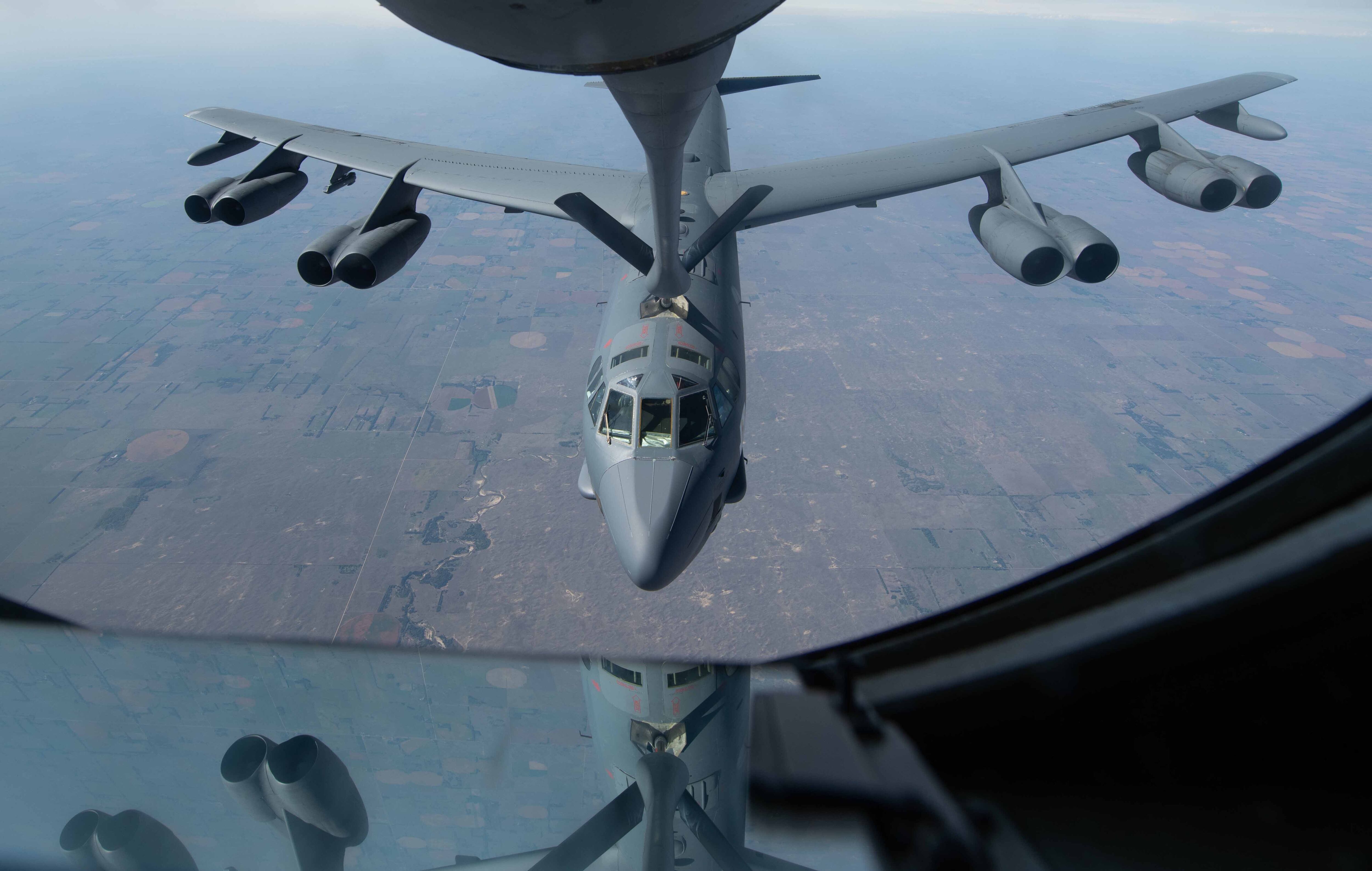WASHINGTON — The U.S. Air Force wants its next-generation aerial refueling tanker, dubbed KC-Z, to be flying and reach initial operational capability by 2040.
According to a request for information the Air Force posted online Jan. 31, the service plans to start conducting an analysis of alternatives for the next-generation air refueling system, or NGAS, in October, and wants to hear what the defense industry might have in mind for it. Industry has until March 2 to submit its responses.
The KC-Z would be the third and final stage of the Air Force’s decades-long tanker recapitalization effort.
The Air Force is now bringing on its fleet of KC-46 Pegasus tankers, which marked the first phase of the modernization, and the service is trying to figure out the right path forward for its next stage, dubbed KC-Y.
Among the options are holding a competition for KC-Y or forgoing a competition and buying more modified KC-46s. The Air Force is expected to shed more light on what it has planned as part of the 2024 budget cycle.
In addition to anticipating the KC-Z would reach IOC by 2040, the Air Force said in the RFI the tanker would need to be able to operate in contested combat scenarios.
Describing how these tankers would operate in combat, the Air Force also told industry to spell out how their aircraft would handle threats — including cyber threats — that might come in that decade, and reduce risk both for itself and the aircraft it would refuel in combat.
The Air Force wants to hear what industry has in mind for refueling unmanned aerial systems with this tanker, and how it might integrate with a joint air battle management network.
And the service also asked industry for ideas on how their tankers could take off from or land at regional or improvised airfields. In recent years, the Air Force has increasingly focused on ensuring its aircraft can operate in non-traditional airfields as it prepares for a potential conflict with China, in which access to its usual bases might be cut off.
The Air Force told industry to detail how their ideas would change the way aerial refueling would be conducted, and what kind of changes to operations or support would be vital to make aerial refueling more capable in a future conflict.
The concepts industry suggests could include high-risk ideas, as long as the technology would be ready by 2032. And the Air Force is interested in hearing how these ideas would use modular open systems architecture, digital engineering, and model-based systems engineering.
The Air Force wants to hear how companies’ tanker ideas would address the military’s desire for fuel and energy efficiency.
The Air Force has repeatedly said it is considering a blended wing design for this tanker, which the service said would increase fuel efficiency and dramatically cut energy consumption. This RFI does not mandate a blended wing design, though the service is looking for innovative ideas for all sizes and classes of aircraft that could get the job done.
The Air Force’s Climate Action Plan, which it released in October 2022, included a photograph of an experimental blended wing prototype aircraft, the X-48B, which Boeing’s Phantom Works, NASA and the Air Force Research Laboratory developed in the late 2000s as an example of the kind of model a future tanker or mobility aircraft could draw inspiration from.
In a Jan. 11 discussion at the Council on Foreign Relations, Air Force Secretary Frank Kendall said a blended wing design is still one of the “very prominent candidates” for a next-generation tanker or transport aircraft, but that it’s too early to say what the Air Force will end up with.
Such a design doesn’t exist in the commercial world today, Kendall said. But the Air Force is doing early design work of its own on a blended wing, he said, and could move towards building a prototype, but it is still a “work in progress.”
In the future, Kendall added, the Air Force is going to need to consider survivability as it ponders its next-generation mobility aircraft.
“Mobility is driven by the threat changes,” Kendall said. “It’s driven by what the threat is doing, to reach out to increasingly long ranges to engage our aircraft.”
“Traditionally, we could take a commercial-derivative aircraft, turn it into a tanker or a transport … but they essentially look like a commercial aircraft,” he continued. “They’re not designed with a high set of requirements for survivability, for resilience. The threat’s taking that freedom away from us.”
John Venable, a senior defense fellow at the Heritage Foundation, said the Air Force’s RFI shows “they want everything and the kitchen sink” to be considered for the next-generation tanker.
“The Air Force is asking for the moon for the next tanker, and they would settle for something that would allow them to get a little bit closer to the threat, with a much more fuel-efficient wing body,” Venable said. “And so this blended wing concept would be a very good thought process.”
But as the Air Force moves to modernize its tanker fleet in years to come, he said, its budget remains to be seen. Even with growing concerns about the possibility of a war with China, Venable said budgetary issues could prevent the KC-Z tanker from achieving IOC earlier than 2040.
“When I think about the timelines that are associated with this KC-Z, I think it’s budget based more than it is strategy based,” he said.
Stephen Losey is the air warfare reporter for Defense News. He previously covered leadership and personnel issues at Air Force Times, and the Pentagon, special operations and air warfare at Military.com. He has traveled to the Middle East to cover U.S. Air Force operations.





